A slice is one of the most common and frustrating problems golfers face. It occurs when the ball curves sharply to the right (for right-handed players) or to the left (for left-handed players) instead of flying straight. Slicing can lead to lost distance, poor accuracy, and a lack of confidence on the course. In this article, we’ll explore the common causes of a slice and provide practical tips to help you straighten your shots. By understanding and addressing the factors contributing to a slice, you’ll be well on your way to hitting the ball more consistently and accurately.
Common Causes of a Slice
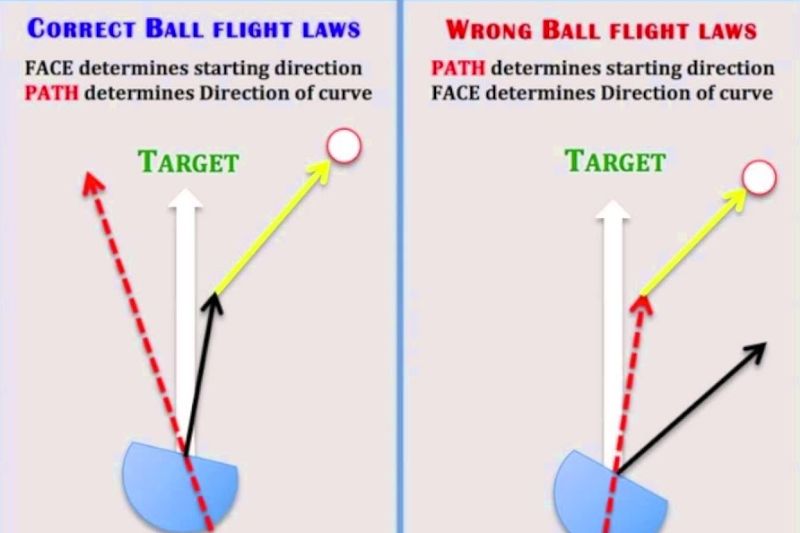
A slice is one of the most common issues golfers face, especially beginners. It’s a shot that curves dramatically from left to right for right-handed golfers (and vice versa for left-handers). While a slight fade can be a controlled and useful shot, a slice is usually an uncontrollable and undesirable miss. The root cause of a slice often lies in improper swing mechanics, grip, stance, and clubface alignment. Understanding these factors and learning how to correct them can significantly improve your game.
Open Clubface at Impact
One of the primary causes of a slice is an open clubface at impact. This means that the clubface points to the right of the target (for right-handed golfers) at the moment of contact. An open clubface can occur due to improper grip, poor hand position, or incorrect swing path. When the clubface is open, it imparts side spin on the ball, causing it to curve to the right.
Out-to-In Swing Path
Another common cause of a slice is an out-to-in swing path, also known as “over-the-top.” This occurs when the club moves outside the target line during the downswing and then cuts across the ball from the outside. An out-to-in swing path often results in an open clubface, further exacerbating the slice. This swing path can be caused by improper weight shift, poor body rotation, or incorrect setup.
Weak Grip
A weak grip is characterized by the hands being turned too far to the left on the club handle (for right-handed golfers). This grip position can make it challenging to close the clubface at impact, leading to an open face and a sliced shot. A weak grip reduces the golfer’s ability to release the club properly, causing a lack of power and control.
Poor Setup and Alignment
Improper setup and alignment can also contribute to a slice. If a golfer’s body is aimed too far left of the target (for right-handed golfers), it can encourage an out-to-in swing path. Additionally, a poor stance, such as an overly open or closed stance, can affect the clubface’s position at impact and the swing path.
How to Not Slice a Golf Ball?

Proper Grip and Hand Position
A proper grip is essential for controlling the clubface and preventing a slice. For right-handed golfers, a neutral or slightly strong grip is recommended. This involves turning the hands slightly to the right on the club handle, with the “V” formed by the thumb and index finger pointing towards the right shoulder. A proper grip allows for better control of the clubface and promotes a square impact position.
Correcting the Swing Path
To eliminate a slice, it’s crucial to correct the out-to-in swing path. One effective method is to focus on creating an in-to-out swing path. This involves swinging the club from inside the target line during the downswing, promoting a more inside-to-square-to-inside path. A helpful drill is to place a headcover or an object just outside the ball and practice swinging without hitting it. This encourages a more inside path and prevents the club from moving outside the target line.
Improving Body Rotation
Proper body rotation is vital for a consistent and powerful swing. Many slicers tend to rely too much on their arms, leading to an out-to-in swing path. To correct this, focus on turning the shoulders and hips together during the backswing and downswing. Initiating the downswing with the lower body, specifically the hips, can help promote a more inside-out swing path and square clubface at impact.
Adjusting the Stance and Alignment
A proper stance and alignment can significantly impact the swing path and clubface position. Start by aligning the feet, hips, and shoulders parallel to the target line. Avoid setting up with an open stance, as this can encourage an out-to-in swing path. Instead, try a slightly closed stance, with the front foot positioned slightly closer to the target line than the back foot. This setup promotes an in-to-out swing path and helps square the clubface at impact.
Equipment Considerations
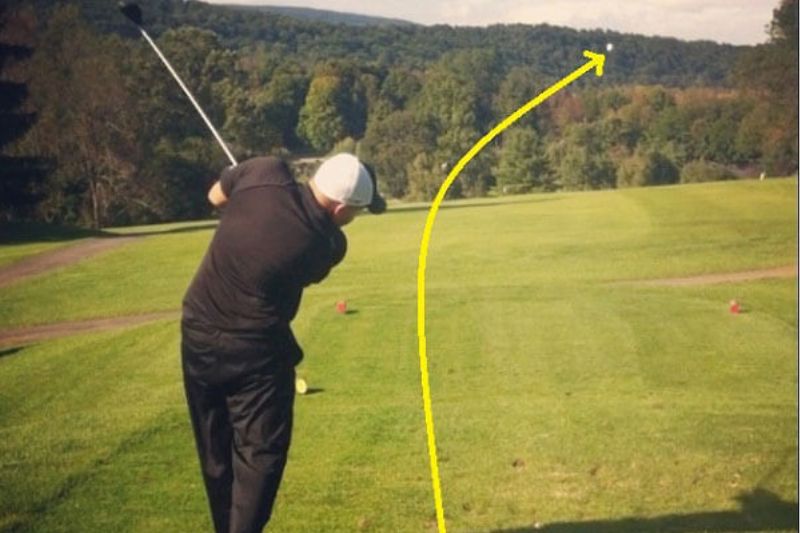
Choosing the Right Club
Selecting the right club can also help prevent a slice. A club with a more closed face angle can help counteract an open clubface at impact. Additionally, using a driver with more loft can reduce side spin and help achieve a higher launch angle, leading to straighter shots. It’s also essential to ensure that the clubs are properly fitted to the golfer’s swing characteristics, including shaft flex, length, and lie angle.
Adjusting the Driver Settings
Many modern drivers come with adjustable settings that allow golfers to fine-tune the club’s characteristics. Adjusting the club’s loft, face angle, and weight distribution can help reduce a slice. For example, increasing the loft and setting the face angle to a more closed position can help promote a draw or straighter ball flight. Experimenting with different settings can help find the optimal configuration for minimizing a slice.
Drills to Fix a Slice
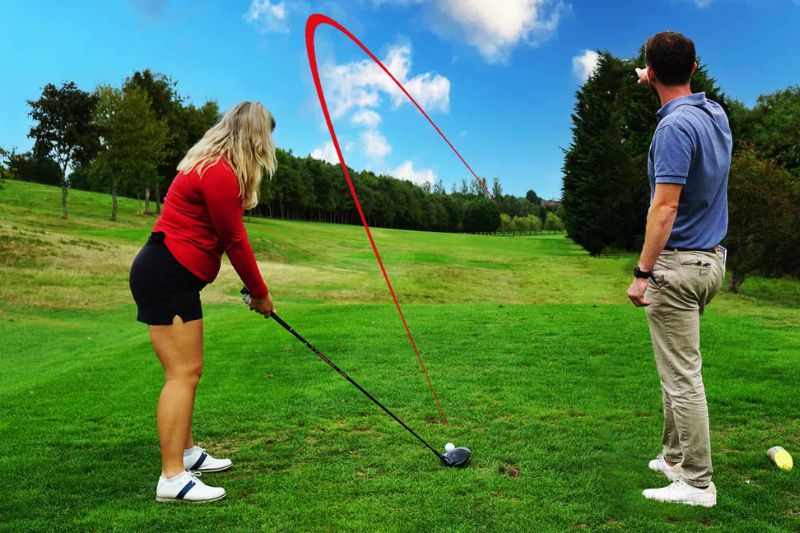
The Tee Drill
The Tee Drill is an effective exercise for promoting an in-to-out swing path and preventing a slice. To perform this drill, place a tee in the ground about six inches in front of the ball and slightly to the inside. The goal is to swing the clubhead over the tee, encouraging an inside-to-out swing path. This drill helps golfers visualize and execute the proper swing path, reducing the tendency to come over the top.
The Towel Drill
The Towel Drill is another useful exercise for correcting an out-to-in swing path. To perform this drill, place a towel under both arms and practice swinging without letting the towel drop. This drill promotes a connected and synchronized swing, reducing excessive arm movement and encouraging proper body rotation. It helps golfers maintain the correct swing plane and avoid the over-the-top motion that leads to a slice.
The Swing Plane Trainer
A Swing Plane Trainer is a helpful tool for visualizing and maintaining the correct swing plane. It consists of a guide or hoop that helps golfers practice swinging on the proper plane. Using a Swing Plane Trainer can reinforce the correct swing path and prevent the club from moving outside the target line. Regular practice with this tool can help golfers develop a more consistent and reliable swing, reducing the likelihood of a slice.
Mental Approach and Focus
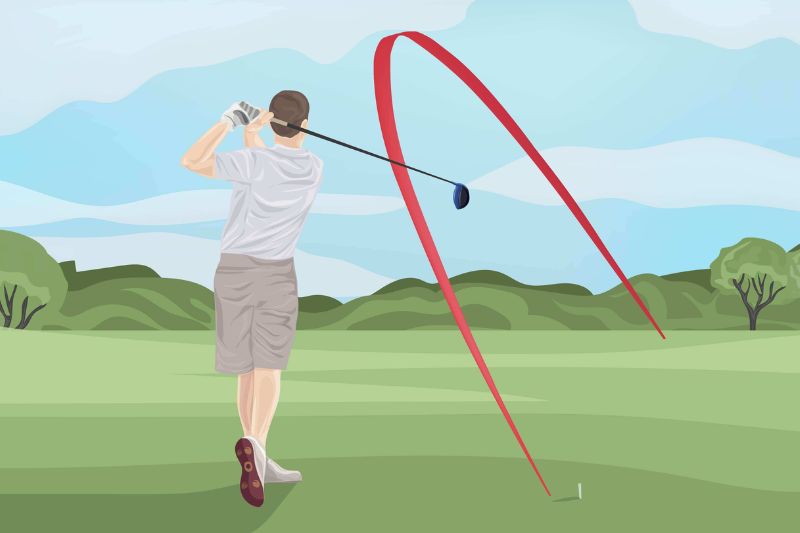
Visualization Techniques
Visualization is a powerful mental tool for improving golf performance. By visualizing the desired shot and ball flight, golfers can create a clear mental picture of the swing and outcome. Before addressing the ball, take a moment to visualize a smooth, in-to-out swing path and a straight or slightly draw shot. This mental rehearsal can help reinforce the correct swing mechanics and build confidence.
Staying Relaxed and Confident
Tension and anxiety can contribute to a slice by disrupting the swing’s rhythm and timing. Staying relaxed and confident is crucial for executing a smooth and controlled swing. Focus on maintaining a relaxed grip pressure and a fluid motion. Avoid gripping the club too tightly, as this can lead to an open clubface and a slice. Confidence in your swing mechanics and equipment can also help reduce anxiety and promote better shots.
Pre-Shot Routine
A consistent pre-shot routine can help golfers stay focused and calm, reducing the chances of a slice. A pre-shot routine involves a series of steps taken before hitting the ball, including visualizing the shot, aligning the body, and taking practice swings. This routine helps establish a consistent rhythm and tempo, promoting better shot execution. By following a set routine, golfers can eliminate distractions and maintain a clear focus on the shot.
FAQs
Why do I slice my driver but not my irons?
Slicing the driver but not the irons is a common issue due to differences in club design and swing mechanics. Drivers have longer shafts and less loft, making them more challenging to control. Additionally, the driver swing often involves a more sweeping motion, while irons require a steeper angle of attack. Focusing on proper setup, swing path, and clubface control can help address this discrepancy.
Can a slice be caused by equipment?
Yes, equipment can contribute to a slice. Factors such as club length, shaft flex, loft, and face angle can all influence ball flight. A driver with an open face angle or a shaft that is too stiff can exacerbate a slice. It’s essential to ensure that your clubs are properly fitted to your swing characteristics. Working with a professional fitter can help identify and correct any equipment-related issues.
Is a slice always a bad shot?
While a slice is generally considered an undesirable shot, it can sometimes be useful in specific situations. For example, a controlled slice (also known as a fade) can be used to navigate around obstacles or land the ball softly on the green. However, an uncontrollable slice is typically problematic and can lead to lost balls and higher scores. The goal is to have the ability to control the ball flight and use different shot shapes as needed.
Conclusion
Summary of Key Points
A slice is a common problem that can significantly impact a golfer’s performance. Understanding the causes of a slice, such as an open clubface, out-to-in swing path, weak grip, and poor setup, is the first step towards correcting it. By focusing on proper grip, swing path, body rotation, and alignment, golfers can reduce or eliminate their slice. Additionally, equipment adjustments and mental techniques can play a vital role in achieving
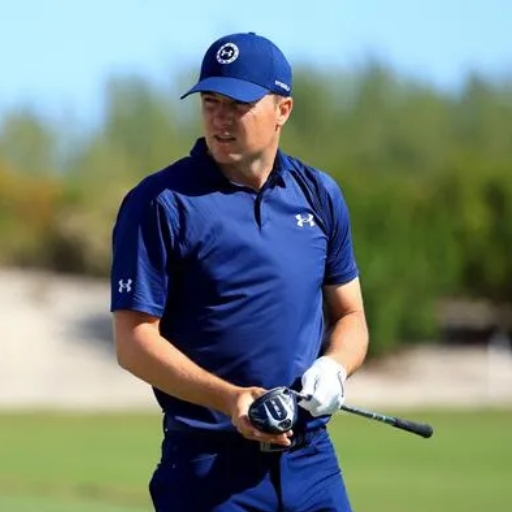
I am the owner of Ricks Golf Shop, a popular destination for golf enthusiasts. My passion for golf began in my teenage years and has only grown over the years. With over 10 years of experience in the golf industry, I offer expert advice and quality products. With a friendly demeanor and extensive knowledge, I ensure every customer leaves happy.
